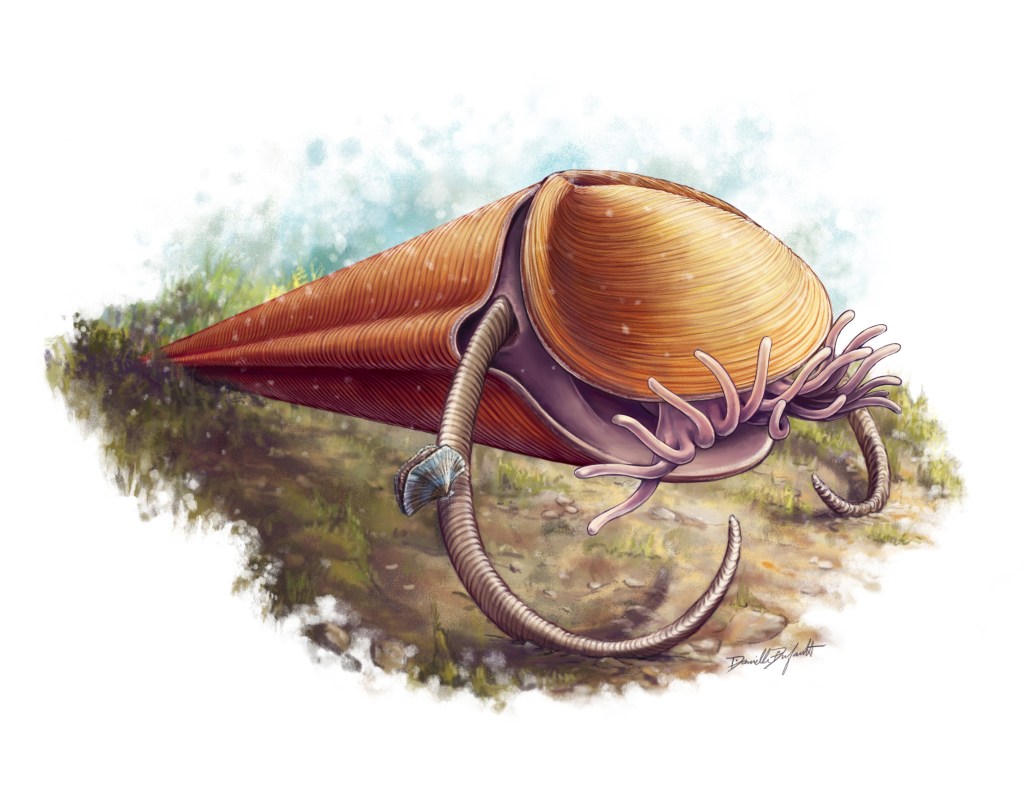In Disney’s The Land Before Time, a bunch of kid dinosaurs led by a young “long-neck” sauropod are separated from their parents and must band together to keep safe. According to a study published Thursday in Scientific Reports, there may be a tiny grain of truth to this vision of age-segregated herds—minus the talking dinosaurs and interspecies friendships.
Led by Cary Woodruff, a paleontologist at the University of Toronto, the paper describes the smallest skull ever found from a Diplodocus, a type of giant sauropod that lived in the late Jurassic period.
Videos by VICE

Measuring 24 centimeters (9. 5 inches) in length, the skull likely belonged to a juvenile Diplodocus that was around six-years-old when it died. The rare specimen is officially named CMC VP14128, but has been nicknamed “Andrew” in honor of industrialist and dinosaur enthusiast Andrew Carnegie.
What makes Andrew really special is its teeth and face, which significantly differ from adult Diplodocus skulls. Where mature Diplodocus specimens have wide, squared snouts and teeth specialized for ground-level grazing, Andrew has a short, narrow snout and a dental pattern that would be more suited for a generalist diet composed of many types of foliage.
This distinction corroborates past speculation that sauropod juveniles did not experience much parental care, and did not run in the same circles as their adult counterparts. While some dinosaurs nurtured offspring in nests like modern birds, sauropods like Diplodocus were likely left to fend for themselves once they hatched.
“With sauropods, the analogy is that they were probably like sea turtles,” Woodruff told me in a phone call. “It looks like they have very rudimentary, simple nests where the females would have scratched out a depression in the ground, dropped the eggs, and left. Just like baby sea turtles hatching out, they were on their own.”

If these sauropod babies were lucky enough to survive their infancies, they may have formed juvenile packs in forested areas where it was easier to take cover from predators. There was probably not much interaction between these young herds and Diplodocus adults, because the mature sauropods preferred open meadows and fields. These age-segregated populations may have evolved in part to protect young dinosaurs from getting trampled by their gargantuan elders.
Andrew’s skull helps contextualize these possibilities, and it may explain why Diplodocus juveniles consumed a more diverse diet—or a “greater range at the salad bar,” as Woodruff put it. Growing to such extraordinary sizes would require enormous amounts of food, so Diplodocus youngsters could not afford to be picky.
Read More: Paleontologists Discover Rare Footprints of Massive Dinosaurs in Scotland
“If we’re looking for changes associated with growth in dinosaurs, the greatest degree of changes you see in growth are going to be in the animals that undergo the greatest size change from when they are born to when they die—and that’s a sauropod,” Woodruff said. “Little Andrew hatched from an egg the size of a cantaloupe and in 20 to 25 years, if it had lived that long, it would have been 100 feet long.”
“These animals didn’t just get big,” he added. “Their entire skeleton radically changes, even the way it looks, throughout their life to be able to get big.”
Get six of our favorite Motherboard stories every day by signing up for our newsletter.




